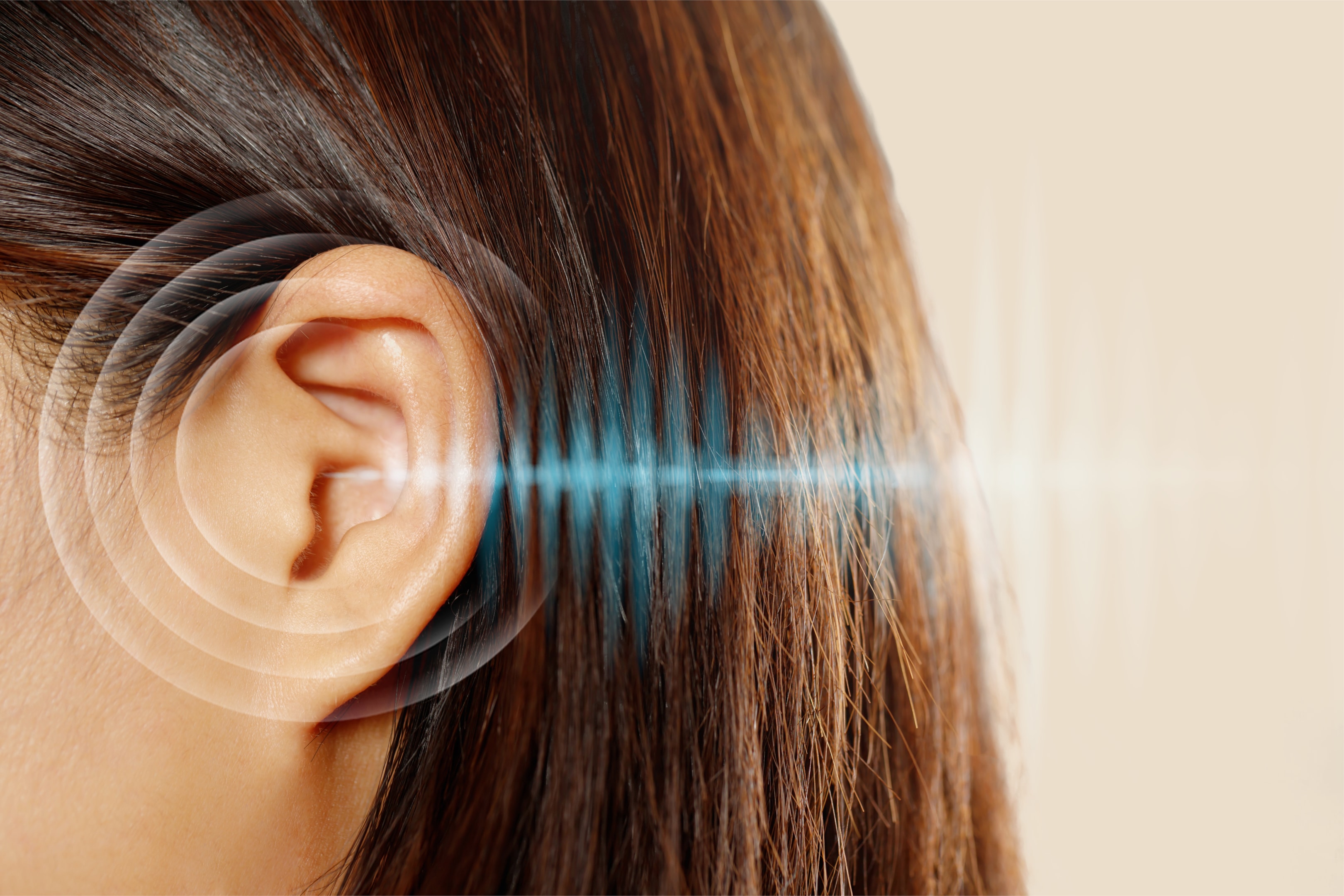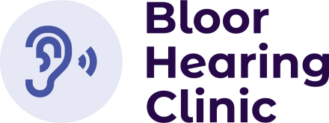
Our Blog
Sensorineural Hearing Loss: What It Is and How To Treat It

Good hearing health is essential for effective communication and maintaining social connections. It allows us to respond to our surroundings, pick up on subtle conversation cues, and develop independence. When our hearing is impaired, doing these tasks becomes challenging and the overall quality of life declines.
There are three parts of the ear to consider when caring for your hearing health: the outer, middle, and inner ear. The latter houses the cochlea, vestibulocochlear nerve, and other structures responsible for converting sounds into electrical signals that the brain can interpret. Damage to these delicate structures can lead to sensorineural hearing loss (SNHL).
SNHL is the most common type of permanent hearing loss, affecting the inner ear or auditory nerves. To treat or, better yet, avoid this condition, it’s essential to understand the signs of hearing loss, its causes, symptoms, and treatment options, which we will discuss in this guide. We’ll also identify the types of SNHL, diagnosis, and aid. Read on.
Sensorineural Hearing Loss – Definition
Sensorineural hearing loss affects about 90% of those with hearing loss in adulthood and is estimated to affect 466 million people globally. This data accounts for 6% of the world’s population.
Damage to the tiny hair cells in the inner ear or the hearing nerve prevents sounds from reaching them. In short, the damaged auditory nerves fail to convert sound waves into meaningful electrical signals, disrupting communication between the ear and the brain. This hearing loss can affect one or both ears and range from mild to profound.
People with SNHL don’t just experience lower volume. They often struggle with sound clarity even when sound is loud enough. It can either develop over decades due to age-related hearing loss or strike suddenly (Sudden Sensorineural Hearing Loss, SSHL), requiring immediate medical attention. This brings us to the types of sensorineural hearing loss, which we will discuss further below.
Sensorineural Hearing Loss – Types
SNHL can be categorized into different types based on onset and severity:
Sudden hearing loss
Noise-induced hearing loss
Age-related hearing loss
Unilateral hearing loss
Sudden SNHL (SSHL), also known as “sudden deafness”, develops within hours or days and often requires urgent treatment. This specific form involves a rapid loss of 30 decibels or more within three days. Some people mistake it for an ear infection or congestion from a cold and delay medical help. However, SSHL is a medical emergency that requires immediate evaluation for the best chances of recovery.
Another form of SNHL is rather common: noise-induced hearing loss. From the term, we can derive that prolonged or repeated exposure to loud noises is the culprit. However, it’s important to note that it can only be a form of SSHL if excessive noise exposure damages hair cells in the cochlea or inner ear nerves.
One of the known types of hearing loss is age-related. This is the gradual loss of hearing in older adults due to changes in the inner ear caused by aging. It’s safe to say that it is an inner ear “wear and tear” condition, where inner ear structures start to degrade.
Finally, unilateral SNHL is hearing loss in one ear, sometimes linked to viral infections, head trauma, or tumors on the vestibulocochlear nerve.
🔖 Helpful Article: Read more about unilateral hearing loss here.
Difference Between Sensorineural and Conductive Hearing Loss
Sensorineural and conductive hearing loss are completely different in terms of:
Location of the problem or damage
Causes
Type
Effects of sound perception
Treatment options
If the SNHL occurs in the inner ear, conductive hearing loss happens when sound cannot pass through the outer or middle ear due to blockages, ear infections, or structural issues. Earwax buildup, fluid in the middle ear, a perforated tympanic membrane (eardrum), or ossicle (middle ear bone) damage can cause it.
Unlike SNHL, conductive hearing loss is often temporary and may be treated with medications, surgery, or earwax removal. This means conductive hearing loss is reversible with the right treatment. In contrast, sensorineural hearing loss can become permanent because damaged hair cells in the cochlea do not regenerate.
While SNHL and CHL can coexist (mixed hearing loss), their treatment and management strategies differ significantly. This highlights the importance of understanding the various kinds of hearing loss, as proper diagnosis plays a crucial role in guiding effective and personalised treatment plans.
Sensorineural Hearing Loss – Causes
Various factors influence the development of SNHL. We’ll break them down according to the following types.
Congenital Causes
Approximately 1 to 3 out of every 1,000 children have sensorineural hearing loss. Some people are born with SNHL due to:
Genetic syndromes affecting the auditory nerve (Usher syndrome, Waardenburg syndrome, and Pendred syndrome)
Maternal infections (Rubella, cytomegalovirus, toxoplasmosis, or syphilis)
Birth complications (Low oxygen levels (hypoxia), premature birth, or jaundice requiring blood transfusion)
Here, SNHL develops at birth or within the first few months of life and is detected during newborn hearing screenings. It is sometimes progressive, meaning it worsens as the child grows.
Developed Causes
Also known as acquired SNHL, causes are developed over time or suddenly, which brings us back to the types of SNHL:
Aging (Presbycusis) – Most common cause of SNHL
Noise-Induced Hearing Loss (NIHL) – Second most common cause of SNHL
Certain medications can also damage the inner ear. In fact, over 200 medications are known to cause SNHL, including ototoxic drugs, loop diuretics, and some cancer treatments.
Furthermore, the following causes of sensorineural hearing loss are considered developed or acquired:
Ear infections and viruses (Bacterial infections, Meningitis)
Head Trauma and Skull Fractures
Autoimmune Inner Ear Disease (AIED)
Neurodegenerative Diseases
Neck or Ear Surgery Complications
Increased Risk
Even if you don’t have a direct cause, these factors make SNHL more likely over time:
Family history of hearing loss
Frequent exposure to noisy environments
Certain medical conditions, such as diabetes
Smoking and poor circulation, which reduce inner ear blood flow
Diabetes
Low-sodium diet & hydration
Sensorineural Hearing Loss – Symptoms
The most common sensorineural hearing loss (SNHL) symptom is a gradual or sudden reduction in hearing ability. There isn’t usually pain, unlike issues with the eardrum or ear infections. The decline in hearing mostly affects clarity rather than just volume.
People usually notice that speech sounds muffled or that they have trouble distinguishing words, especially in noisy environments. Conversations might become exhausting because the brain has to work harder to process sound.
Another common sign is difficulty hearing high-pitched sounds, like children’s voices, birds chirping, or even doorbells and phone notifications. Over time, lower frequencies can also become harder to hear.
Ringing in the ears (tinnitus) is another big one. Many people with SNHL experience a constant or occasional ringing, buzzing, or hissing sound in their ears. It can be mild and barely noticeable or loud enough to interfere with sleep and concentration.
Here are some more signs that an SNHL is developing:
Sound distortion (warped or robotic)
Balance issues (dizziness, vertigo, or unsteadiness)
A feeling of ear clogged even without blockage
Auditory hallucinations
In cases of sudden sensorineural hearing loss (SSHL), hearing can drop drastically within hours or days, often in just one ear. Some wake up and realize they can’t hear from one side. Others notice it after a phone call or while listening to music with earbuds.
One interesting thing about SNHL is that some hearing tests can reveal hidden hearing loss even before a person notices symptoms. Consider a regular Canada hearing test to catch early signs and symptoms of hearing loss before it develops.
Sensorineural Hearing Loss – Diagnosis
Proper diagnosis is an essential first step to treating and managing any type of hearing loss. Here’s how it usually goes.
1. Preliminary Questions
Doctors begin by discussing symptoms, family history, and lifestyle factors. They may ask about exposure to loud noises, recent head trauma, ear infections, or the use of certain medications known to cause hearing loss. Understanding when and how the hearing loss began helps determine if it’s sudden or gradual, which can indicate different underlying causes.
2. Physical Exam
A thorough examination of the ear canal and tympanic membrane (eardrum) helps rule out conductive hearing loss, which is caused by blockages, infections, or structural problems. Since SNHL originates in the inner ear or auditory nerve, this step ensures that the issue isn’t something like earwax buildup or a middle ear infection that could be treated differently.
3. Hearing Tests
Audiologists use several specialized tests to confirm SNHL and assess the extent of hearing damage:
Pure tone audiometry – Measures how well a person can hear different sound frequencies. A person with SNHL may struggle with high-pitched sounds first.
Speech audiometry – Evaluates how well a person understands speech, especially in noisy environments. Many people with SNHL can hear sounds but have trouble distinguishing words.
Auditory brainstem response (ABR) – This test checks how well the auditory nerve sends sound signals to the brain, helping to rule out neurological issues.
Other tests – If SNHL has no clear cause, doctors may order imaging scans (MRI or CT) to check for tumors (acoustic neuroma) or structural problems affecting the vestibulocochlear nerve.
Since sudden sensorineural hearing loss (SSHL) can be a medical emergency, prompt testing is crucial. Early diagnosis increases the chances of restoring hearing, especially if treatment begins within the first 48 to 72 hours.
Help for Sensorineural Hearing Loss
Managing SNHL depends on the severity of hearing loss and the underlying cause. While some cases may respond to treatment, others require long-term strategies to improve communication and quality of life. The following are considered helpful in managing SNHL.
Hearing Aids
There are different types of hearing aids in Toronto. Their main purpose is to ‘aid’ sound perception by amplifying sound for better hearing. For those with severe hearing loss in one ear, a bone-anchored hearing aid (BAHA) may be an option. This device transmits sound vibrations directly to the inner ear through bone conduction.
Cochlear Implant
For profound hearing loss, cochlear implants bypass damaged hair cells and stimulate the auditory nerve directly. This approach restores a form of hearing perception when traditional hearing aids don’t help.
Assistive Devices
Devices like FM systems, captioned phones, and visual alerting systems improve communication and safety. Vibrating alarms and flashing doorbells help those with SNHL stay aware of their surroundings.
Medication
Healthcare providers often prescribe corticosteroids for SSHL to reduce inflammation in the inner ear. Early treatment, usually within 48 to 72 hours, increases the chances of recovery.
Surgery
Surgeons may remove tumors (like acoustic neuromas) or correct structural abnormalities when they contribute to hearing loss. While surgery may not always restore hearing, it can prevent further complications like dizziness or facial nerve issues.
Watchful Waiting
Audiologists or healthcare providers may choose to monitor mild, stable SNHL instead of recommending immediate treatment. This approach works best when hearing loss remains unchanged and doesn’t disrupt daily life.
Sensorineural Hearing Loss – Management
Beyond medical treatments, adjusting daily habits can help people improve communication and maintain independence.
Safety Systems
Alert systems, such as vibrating alarms or flashing doorbells, enhance safety for those with hearing impairments.
Lip Reading
Learning to read lips can improve communication in noisy environments.
Sign Language
Some individuals may benefit from learning sign language to facilitate interaction.
Special Classroom Seating
Children with SNHL may need front-row seating in classrooms to hear the teacher better and reduce background noise distractions.
Reducing the Risk
A low-sodium diet may help manage inner ear fluid balance, particularly for those with conditions like Ménière’s disease. Avoiding excessive loud noise exposure and using hearing protection can prevent further damage.
Sensorineural Hearing Loss – Prognosis
SNHL prognosis depends on the cause, severity, and how quickly treatment begins. Some cases improve with intervention, while others worsen over time.
Recovery From Sudden SNHL
If sudden sensorineural hearing loss (SSHL) is treated within the first two weeks, recovery is more likely. Some people regain hearing fully or partially within one to two weeks, but delayed treatment can lead to permanent hearing loss.
Progressive Worsening
Many cases of SNHL, especially those caused by aging, noise exposure, or genetic factors, worsen over time. Since damaged hair cells in the inner ear don’t regenerate, hearing loss often becomes permanent and may require hearing aids or cochlear implants.
Managing Long-Term Effects:
With proper management—such as using hearing protection, assistive devices, and lifestyle adjustments—people with SNHL can maintain a good quality of life. Early diagnosis and consistent follow-ups with an audiologist lead to better outcomes.
How Your Audiologist Can Help
Audiologists help people track hearing changes, adjust treatment plans, and explore new hearing technologies. They can fine-tune hearing aids, recommend cochlear implants, or teach effective communication strategies, improving overall hearing management.
Questions You Can Ask
What type of hearing loss do I have, and what caused it?
How severe is my hearing loss, and will it get worse?
What are my treatment options, and which one do you recommend?
Would hearing aids or cochlear implants help in my case?
How can I protect my remaining hearing?
Are there any lifestyle changes that could improve my condition?
What assistive devices or technologies can make daily life easier?
How often should I get my hearing tested?
What should I do if my hearing suddenly worsens?
Are there any clinical trials or new treatments for my condition?
Conclusion
Sensorineural hearing loss isn’t always avoidable, but you can lower the risk in many cases. Some causes, like genetic syndromes or congenital conditions, are beyond control. However, preventable factors, such as noise-induced hearing loss, certain medications, and lifestyle habits, can make a difference. Early diagnosis and treatment lead to better outcomes. If you experience any signs of hearing loss, seek medical attention immediately.
